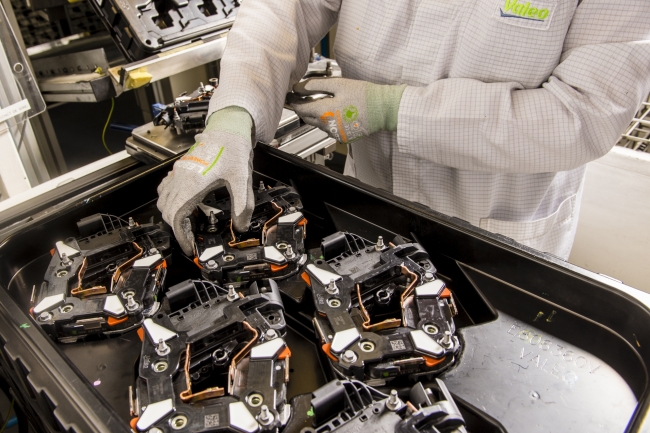3 minute read
Valeo commits to achieving carbon neutrality by 2050
Valeo has committed to achieving carbon neutrality by 2050 and is on course to reach 45% of its objective by 2030.
The global automotive parts supplier has UK production sites in Redditch, Swindon and Gateshead, along with R&D centres in Basildon and Chelmsford. By 2030, Valeo’s emissions will have decreased by 45% across its entire value chain – including emissions from its suppliers, its own operating activities and the end use of its products – compared with 2019.
By 2050, Valeo will have achieved carbon neutrality for all of its own operating activities and across its entire supply chain worldwide and will be 100% carbon neutral (including the end use of its products) in Europe.

Valeo has committed to achieving carbon neutrality by 2050 and will have reached 45% of its objective by 2030 / Picture: Valeo
Valeo is also a signatory of the Business Ambition for 1.5°C campaign that brings together companies committed to achieving carbon neutrality by 2050 using the defined framework of the Science Based Targets initiative (SBTi).
Jacques Aschenbroich, Valeo’s chairman and chief executive officer, said: “The entire automotive industry is investing heavily to combat global warming. At Valeo, the reduction of CO2 emissions has been central to our strategy since 2010, and sales generated from technologies that help to reduce CO2 emissions have grown 20-fold to around 10 billion euros in 2021. We intend to continue our efforts, with the aim of achieving carbon neutrality by 2050 and reaching nearly half of this objective by 2030.”
On the journey to carbon neutrality, 2030 is an important and fast-approaching milestone. By then, Valeo is committed to reducing:
• emissions related to its operating activities by 75%, from 1.1 million to 0.3 million metric tons of CO2 (Scopes 1 and 2);
• emissions related to its supply chain by 15%, from 9.5 million to 8.1 million metric tons of CO2 (upstream Scope 3);
• emissions related to the end use of its products (Scope 3 downstream) by 15%, from 39 million to 33.1 million metric tons of CO2. This reduction is expected to rise to 50% when taking into account emissions avoided by the group’s electrification technologies, with CO2 emissions declining from 39 million to 19.5 million metric tons.
By 2030, Valeo will have invested more than 400 million euros in reducing emissions related to its operating activities (Scopes 1 and 2). These investments will be used to upgrade the group’s sites to enable the current 100 most carbon-intensive facilities to become high-energy efficiency sites by 2030. Upgrades will include the development of eco-friendly buildings, the widespread use of LED lighting and the integration of heat recovery systems.
The proportion of low-carbon energy in the group’s energy consumption will increase from 5.5% in 2019 to 80% by 2030, having already risen to 50% by 2025. A number of sites are already piloting renewable energy alternatives, including three group sites in Chennai, India, where 90% of consumption is wind-powered, and sites in Sanand, India and Bad Rodach, Germany, which uses its own solar energy facilities to produce 30% and 20% of the energy it consumes, respectively.
At the same time, Valeo will continue to expand its portfolio of technologies that contribute to low-carbon mobility, in particular its solutions for vehicle electrification. In 2019, 57% of Valeo’s sales were generated by technologies that help to reduce CO2 emissions. Today, one in three vehicles worldwide is fitted with Valeo technology that helps to reduce CO2 emissions.
Valeo has also pursued an ambitious sustainable development policy, reducing its water, energy and packaging consumption by 46%, 29% and 32%.